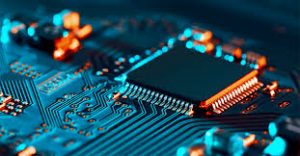Assembled Circuit Board Can Be Used in IoT Devices
IoT is a technology that connects the physical world with the digital, and it’s making its way into every aspect of life. From smart phones to wearable tech and even industrial automation, IoT devices can streamline processes, monitor environments and transmit data at high speeds to other devices and the internet. At the heart of each device are integrated circuit boards that hold low-voltage electrical power, electronic control algorithms and proprietary data. They also house the communication and connectivity protocols to connect devices to each other and to their owners.
To ensure an assembled circuit board can function as intended, manufacturers must consider a wide range of factors. These include size restrictions, environmental conditions and power consumption. The use of standard components and following design for manufacturing (DFM) guidelines can help reduce production costs and improve assembly capabilities.
Depending on the application, IoT PCBs may need to handle a variety of temperatures and humidity levels, as well as be exposed to dust and moisture. To prevent corrosion, the PCB should be coated with a protective layer that can resist these elements and other contaminants.
The size and shape of a PCB also needs to be considered when designing IoT components. To avoid sacrificing functionality, designers should try to minimize the amount of space taken by IoT components and follow industry design guidelines when possible. This includes using HDI technology, which offers tinier trace widths and superior wiring density to allow for more components in less space. In some cases, a custom shape might be required to fit an IoT component into its intended form.

How an Assembled Circuit Board Can Be Used in IoT Devices
For IoT components, flex PCB materials offer reduced weight and more flexibility than traditional rigid PCBs, allowing them to be used in smaller devices with tighter tolerances. This makes them ideal for IoT products that are often handled or worn. They also have a higher resistance to stress and vibrations, which is beneficial for wearable fitness trackers and medical devices.
In addition to a flex PCB, IoT devices require sensors that can detect a wide range of parameters. These can include proximity sensors, which detect the presence of a person or object within a given area. They are used in projects like touchless interfaces, security systems and occupancy-based lighting. Humidity sensors can detect the amount of moisture in the air and are typically employed in climate control, home automation, and agricultural applications.
Some IoT sensors can also benefit from energy-harvesting techniques, which can help reduce battery costs and extend their working lives. These can be incorporated into the device via solar panels, kinetic energy converters, thermoelectric generators, and more. Real-time power monitoring can be added to IoT components, enabling users to select a lower-power mode when longer battery life is preferred or a faster processing mode when data processing is necessary. This feature can also be useful for tracking power usage over time and providing users with alerts when the device is approaching a critical threshold.



